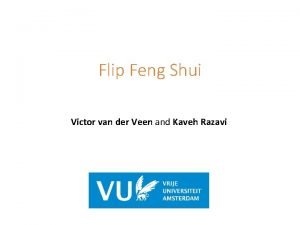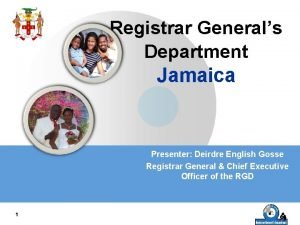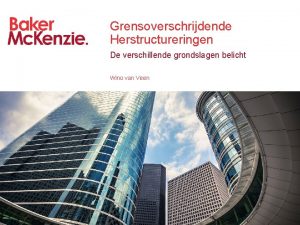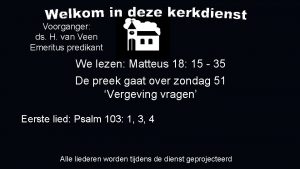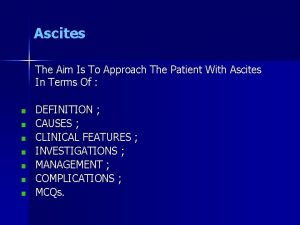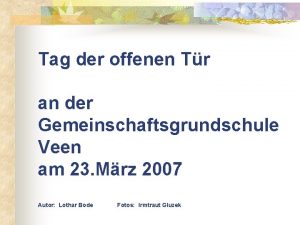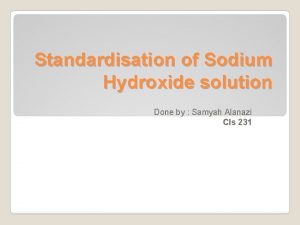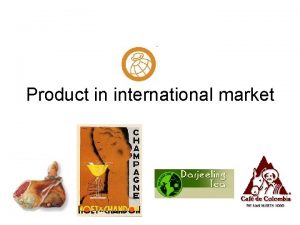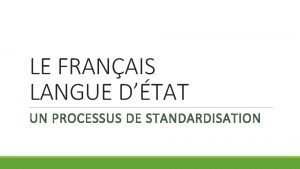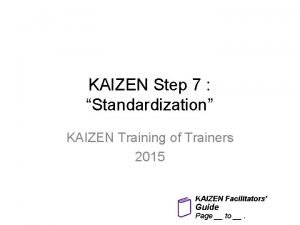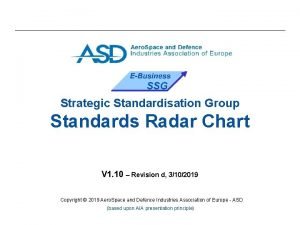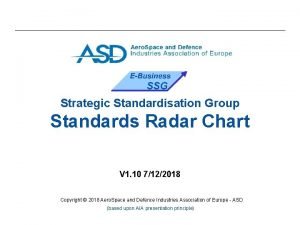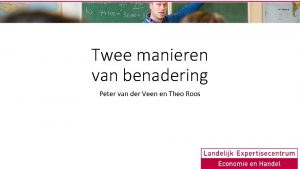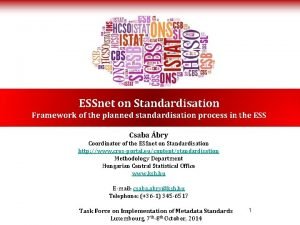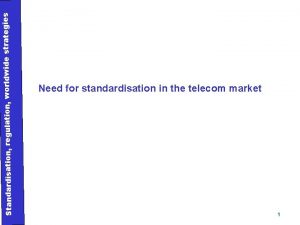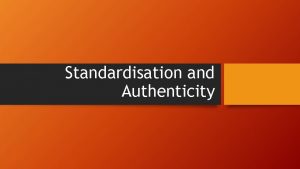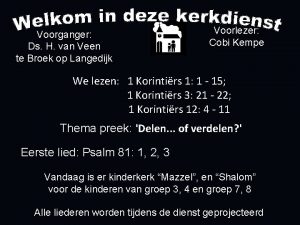Sponsorship on Standardisation Gosse van der Veen Statistics











- Slides: 11

Sponsorship on Standardisation Gosse van der Veen (Statistics Netherlands) Daniel Defays (Eurostat) 1

What has been done so far? Background – PGTF 2: The ESS should increase the efficiency and quality of its statistical production – The Cracow/Hague action plan: Promoting the further standardisation of processes and methods – Joint strategy paper: The integration that is envisaged will require more harmonisation and standardisation (…) leading to better quality and higher productivity of the statistical data processing Workshop on ESS standardisation October 2010 Discussions in DIME, ITDG, Metadata working group Discussion in Partnership Group December 2010, March 2011 2

The business case Both the merits and costs should be considered n User needs (detail, timeliness, comparability … ) n Efficiency through inter-operability and reuse n Costs of standardisation n Loss of local or sectoral elements 3

Opportunities: some examples n Output: standardisation of (sub)populations over statistical regulations, the census HUB n Post-processing: seasonal adjustment and statistical disclosure control n Throughput: common validation rules, compensation for quality changes HICP, estimation below the exemption threshold n Input: sharing of web data collection tools, the Euro. Groups Register 4

Management of standardisation n Standardisation does not end with the adoption of the standard n The benefits result from implementation n This requires support measures (guidance, training) n Monitoring, evaluation and maintenance n This has to be organised, possibly requiring new forms of collaboration 5

Organisation and approach of the Sponsorship n Limit Sponsorship Group: NL, DE, FR, HU, IT, LV n Limited time frame: September 2011 - Sept. 2013 n Separate strategic and operational discussion: – Use expert groups to prepare proposals on request – Consult experts outside the Sponsorship MS (eg Sweden) n Communication to non-participating countries, other European and international groups (e. g. HLG-BAS) n Mandate agreed by ESSC in May 2011 n ESSC involvement in the annual work plan 6

Next steps n September 2011 Start of Sponsorship; up a concrete work plan with priorities first year confirmed by ESSC n Summer 2012 Mid term review; work plan second year to ESSC n September 2013 Final report to ESSC draw to be 7

Dimensions of the work programme 1) State of the art 2) Scope 3) Common language 4) Action plan 5) Business model 6) Favourable conditions 7) Relations 8

Potential components of the scope n n n n n Shared infrastructure Common methodologies Interoperability of IT Centres of competence Common data model Common process description Input/output harmonisation Legal framework Metadata framework 9

Action plan n Define framework n Recommend prioritised actions n Draw up action plan – Limited number of areas n Standardisation is a long run process, but it needs quick wins as a fuel 10

Business model n Legal structure n Management n Sharing of costs and benefits n The implementation might require instruments and reconsideration of existing instruments new 11
